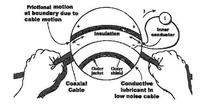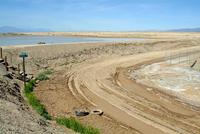-
Budget impasse halts enforcement of chemical plants safety standards

Security experts say that short of a direct nuclear attack on a U.S. city, the most dangerous, mass-casualty catastrophe the United States faces is a terrorist attack on, or an accident in, a chemical facility which would release toxic clouds over neighboring cities and towns. The federal government partial shutdown is making it impossible to enforce safety and security standards formulated to strengthen the ability of thousands of U.S. chemical facilities to withstand terrorist attacks.
-
-
Halt of CFATS work disrupts debate over program’s merit
The budget impasse-related halting of monitoring and enforcing compliance with the 2007 Chemical Facility Anti-Terrorism Standards (CFATS) comes at a time of growing criticism of the measure by GOP – but not only GOP – lawmakers, who complain that there are too many problems with CFATS and the way it has so far been implemented.
-
-
U.K. launches cyberwarfare reserve force
U.K. defense secretary Philip Hammond announced that the Ministry of Defense (MoD) has begun this month to recruit the country’s top IT specialiststo join the Joint Cyber Reserve Unit (JCRU). “In response to the growing cyber threat, we are developing a full-spectrum military cyber capability, including a strike capability, to enhance the U.K.’s range of military capabilities,” Hammond said.
-
-
Sea power: extracting energy from ocean waves

As sources of renewable energy, sun and wind have one major disadvantage: it is not always sunny or windy. Waves in the ocean, on the other hand, are never still. Researchers are now aiming to use waves to produce energy by making use of contact electrification between a patterned plastic nanoarray and water.
-
-
Bipartisan cybersecurity measure to be introduced in Congress
Senator Saxby Chambliss (R-Georgia) last week said he was “very close” to introducing legislation which would encourage the private sector and government agencies to share information regarding cyberattacks. Chambliss has proposed a government “portal,” operated by DHS, to handle information coming from the private sector. Privacy advocates welcome the proposal for a civilian agency like DHS to operate the information sharing “portal” (in earlier versions of proposed cybersecurity legislation, the NSA was tasked with a similar coordinating responsibility).
-
-
Furloughs hamper U.S. ability to respond to chemical disasters
Rafael Moure-Eraso, the chairman of the U.S. Chemical Safety Board(CSB) warned that the agency would be unable to respond to major chemical-related disasters if the government shutdown continued. The agency has furloughed more than 90 percent of its workers. The shutdown has delayed other CSB investigations into chemical accidents in California, Utah, Washington, and Texas. Moure-Eraso said that the delays in investigations could threaten public safety as the agency is unable to make recommendations for prevention of similar accidents.
-
-
Research investments, growing markets drive rise in energy patents

Innovation in energy technology is booming, according to a new paper which examines what factors set the pace for energy innovation. The study finds that investments in research and development, as well as in the growth of markets for these products, have helped to spur this dramatic growth in innovation.
-
-
Debate heats up over N.Y.’s Indian Point nuke license renewal
Indian Point nuclear power plant, located twenty-four miles north of New York City, provides 25 percent of the power used in New York City and Westchester County. The plant’s two reactors were built four decades ago, and the plant operator is seeking a 20-year license renewal for them, or they will have to be shut down. Opponents of the license renewal point to the risk inherent in operating aging reactors – and to a recently discovered risk: Indian Point is located near two active seismic areas — the Ramapo Fault Plain and the Peekskill-Stamford line.
-
-
Hitting the road: Redefining infrastructure maintenance
The results of the Remote-Sensing and GIS-enabled Asset Management System, Phase 2 (RS-GAMS2) project, a 2-year, $1.9 million research enterprise, were released in late August. The project promises to revolutionize the way U.S. roads are inventoried, managed, and maintained. Sponsored by grants from the U.S. and Georgia Departments of Transportation, a multi-disciplinary team of researchers has been developing the system for the past two years, using 18,000 miles of Georgia roadways as their laboratory.
-
-
Guardrails made safer with impact-absorbing Mediterranean tapeweed coating
Researchers have developed protective guardrails from residue of Posidonia oceanica,commonly known as Neptune Grass or Mediterranean tapeweed, in order to minimize the risk of injuries on the roads. The waste material is useful for coating the support posts of guard rails on roads so they can absorb and dissipate much of the kinetic energy if a collision occurs, preventing lacerations and amputations in cases in which a human body hits the support post.
-
-
Long-term trend of saltwater intrusion in the Everglades confirmed
Mangroves love salt water, while sawgrass depends on fresh water. Satellite imagery over the southeastern Everglades confirms long-term trends of mangrove expansion and sawgrass habitat loss near the shore. The trend is related to salt water intrusion caused by sea-level rise and water management practices. Changes in water management, such as the implementation of the Comprehensive Everglades Restoration Plan, may help offset the possible effects caused by future salt water intrusion, but restoration may not suffice if sea-level rise accelerates.
-
-
Crumbling infrastructure hobbles U.S. competitiveness

America’s infrastructure has long been denied the investment and attention needed from public and private entities to remain competitive in an ever-growing global economy. U.S. roads, bridges, power plants, airports, utilities, and other critical infrastructure were once the envy of the world. The post-Second World War golden era (that is, golden era as far as investments in infrastructure are concerned) has come to an end, and fewer resources are committed to improving and maintaining the country’s infrastructure.
-
-
Rural California country faces levee dilemma

About 400 homes and rich farmland in District-10 of Marysville, California risk being flooded should the levees protecting the area fail. The levees, stretching over twenty-eight miles, were built in the early 1900s. The area’s low population may be one reason why county officials have neglected making improvements to the levees in District-10. Local opponents of investment in shoring up the levees are worried that if the levees are improved and the area made safer, “It would open the door for more agribusiness type things, but it would also open the door for more subdivisions,” in the words of one of them.
-
-
N.J. coastal wetlands moderated some of Hurricane Sandy’s fury

Monitoring sensors along the New Jersey coast recorded marsh and wetland swelling during Hurricane Sandy. That swelling is an indication of marshes’ ability to absorb some of the storm surge — which, in hard-hit urban areas, had resulted in high water marks up to seven feet during Hurricane Sandy. Resilient, healthy wetlands near coastal areas have a key role in protecting local communities from hurricane-induced storm surges and flooding.
-
-
First ever evidence discovered of a comet striking Earth

The first ever evidence of a comet entering Earth’s atmosphere and exploding, raining down a shock wave of fire which obliterated every life form in its path, has been discovered. The comet entered Earth’s atmosphere above Egypt about twenty-eight million years ago. As it entered the atmosphere, it exploded, heating up the sand beneath it to a temperature of about 2,000 degrees Celsius, and resulting in the formation of a huge amount of yellow silica glass which lies scattered over a 6,000 square kilometer area in the Sahara.
-
More headlines
The long view
Water Wars: A Historic Agreement Between Mexico and US Is Ramping Up Border Tension
As climate change drives rising temperatures and changes in rainfall, Mexico and the US are in the middle of a conflict over water, putting an additional strain on their relationship. Partly due to constant droughts, Mexico has struggled to maintain its water deliveries for much of the last 25 years, deliveries to which it is obligated by a 1944 water-sharing agreement between the two countries.
Trump Is Fast-Tracking New Coal Mines — Even When They Don’t Make Economic Sense
In Appalachian Tennessee, mines shut down and couldn’t pay their debts. Now a new one is opening under the guise of an “energy emergency.”
Smaller Nuclear Reactors Spark Renewed Interest in a Once-Shunned Energy Source
In the past two years, half the states have taken action to promote nuclear power, from creating nuclear task forces to integrating nuclear into long-term energy plans.
Keeping the Lights on with Nuclear Waste: Radiochemistry Transforms Nuclear Waste into Strategic Materials
How UNLV radiochemistry is pioneering the future of energy in the Southwest by salvaging strategic materials from nuclear dumps –and making it safe.
Model Predicts Long-Term Effects of Nuclear Waste on Underground Disposal Systems
The simulations matched results from an underground lab experiment in Switzerland, suggesting modeling could be used to validate the safety of nuclear disposal sites.
